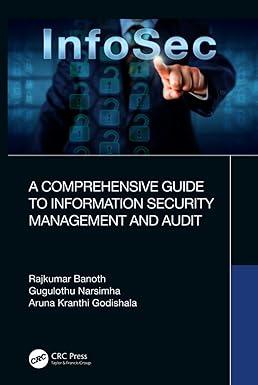Question
*****CASH BOOK VALUE IS 1,500,000 and CASH FMV IS 1,500,000 *****INVENTORY BOOK VALUE IS 2,500,000 and INVENTORY FMV IS 3,000,000 **THE NUMBERS ARE ALL CORRECT
*****CASH BOOK VALUE IS 1,500,000 and CASH FMV IS 1,500,000\
*****INVENTORY BOOK VALUE IS 2,500,000 and INVENTORY FMV IS 3,000,000
**THE NUMBERS ARE ALL CORRECT AND ALL OTHER FORMATTING IS CORRECT
Circle Inc. (CI) is a calendar year C corporation that has two equal shareholders Doug and Jane. Doug, age 81, owns 1,000 shares of CIs common stock, with a basis of $300,000. Jane, age 34, also owns 1,000 shares, but her basis is $7million. Jane inherited the stock from her father. CIs balance sheet assets and liabilities are set forth below.
Olson Inc. (Olson) wants to buy CI, and Doug and Jane are ready to sell. Assume that CI is subject to a combined federal and state income tax rate of 40%, and Doug and Janes combined federal and state ordinary marginal income tax rate is 40% and capital gain rate is 20%.
CIs Assets and Liabilities.
Book value basis Fair market value
Cash $ 1,500,000 $ 1,500,000
Inventory $2,500,000 $3,000,000
Accounts Receivable $2,000,000 $2,000,000
Equipment $2,000,000 $3,000,000
Customer Lists - $500,000
Copyrights $200,000 $500,000
Goodwill - $11,000,000
Total Assets $8,200,000 $21,000,000
Accounts Payable $ 1,500,000 $ 1,500,000
a. CI sells its assets to Olson for $20 million plus an assumption of all liabilities. CI pays its taxes and distributes all remaining proceeds to Doug and Jane. What is Olsons basis in the assets? Any suggestions for Doug or Jane?
b. Olson buys CIs stock from Doug and Jane for $18 million. Is this a sensible price under the circumstances? Calculate the tax impacts to CI, Doug, and Jane. What is Olsons basis in its CI stock?
c. Olson buys 70% of CIs stock from Doug and Jane for 12.6 million. CI redeems the remaining 30% by paying $2.7 million cash to Doug (it will borrow an additional $1.2 million) and distributing the equipment to Jane. Calculate the tax impacts to CI, Doug and Jane.
d. Olson forms a new subsidiary (S). CI is merged into S, and Doug and Jane are each issued 100,000 shares (value $90 per share) of Olsons common stock. What are the tax impacts to CI, Doug, Jane, Olson and S in such a reorganization? If Doug and Jane wanted some cash out of the deal, how much cash could they be paid without destroying the tax-free reorganization?
e. Same as d., except S is merged into CI. What are the tax impacts to CI, Doug, Jane, Olson and S in such a reorganization? If Doug and Jane wanted some cash out of the deal, how much cash could they be paid without destroying the tax free character of the reorganization for everyone?
f. Same as a. except CI is and always has been an S corporation and Dougs basis in his stock is $3 million and Janes basis is $ 8 million.
g. Same as b. except CI is and always has been an LLC taxed as a partnership, and Dougs basis in his partnership interest is $ 3 million and Janes basis is $8 million.
Step by Step Solution
There are 3 Steps involved in it
Step: 1

Get Instant Access to Expert-Tailored Solutions
See step-by-step solutions with expert insights and AI powered tools for academic success
Step: 2

Step: 3

Ace Your Homework with AI
Get the answers you need in no time with our AI-driven, step-by-step assistance
Get Started


